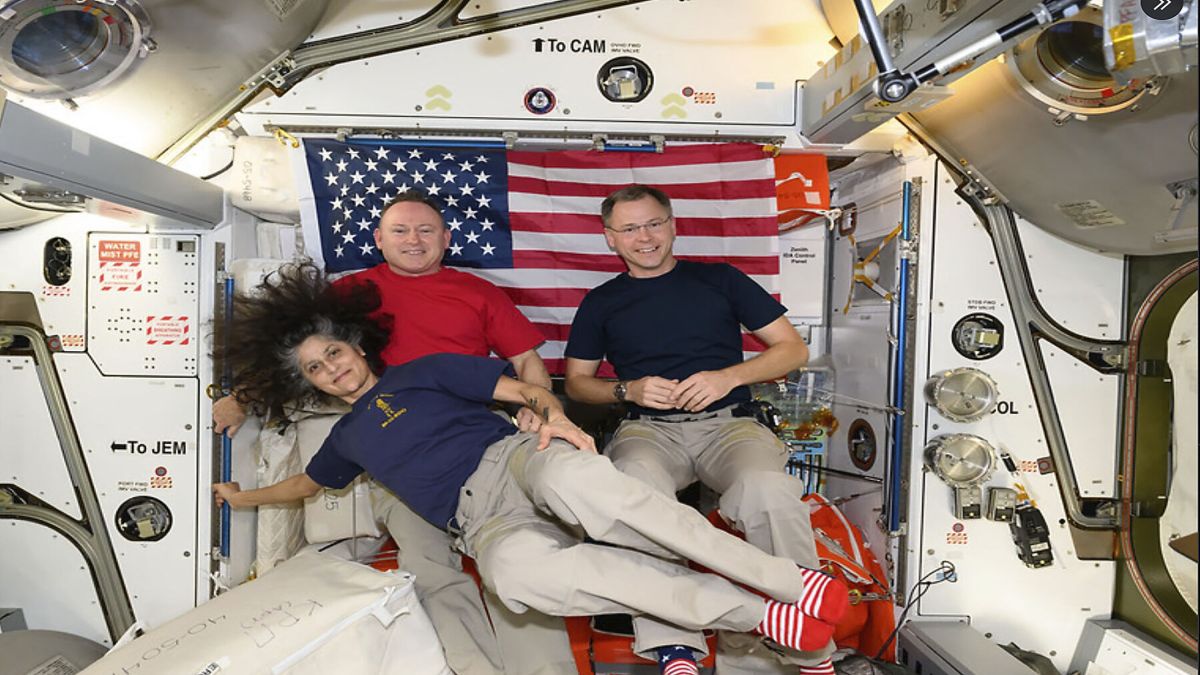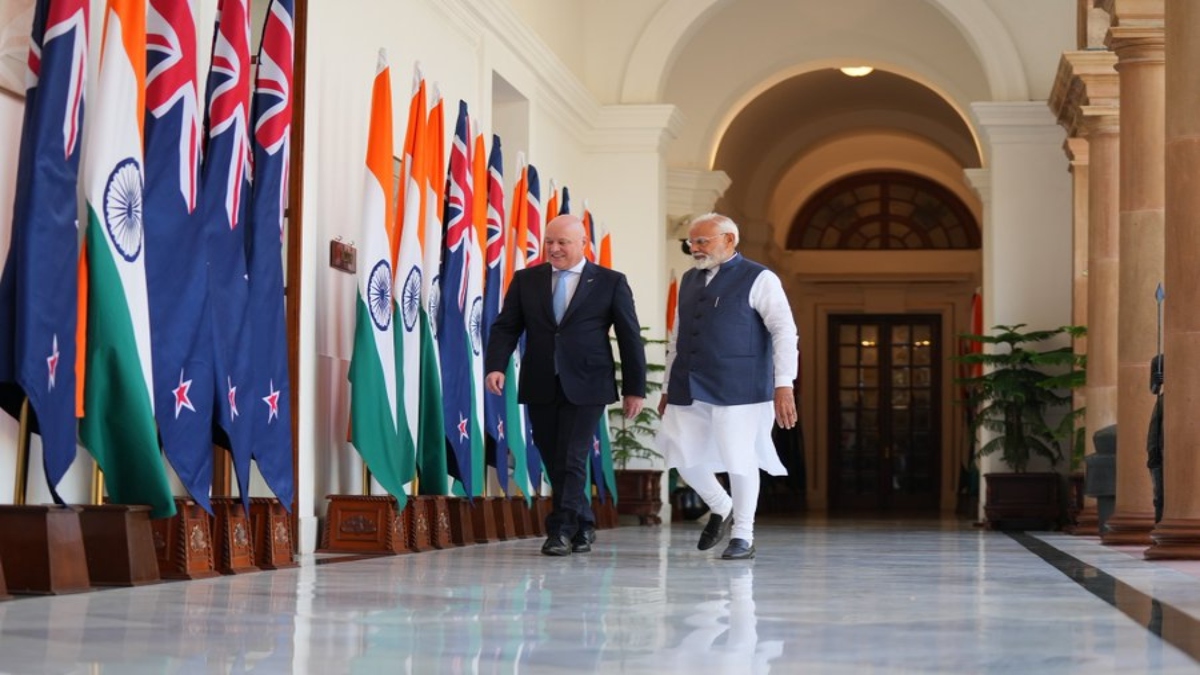Expect the unexpected — would perhaps best explain the situation for Nasa astronauts Sunita “Suni” Williams and Barry “Butch” Wilmore. They were launched into space last June for an eight-day mission aboard the International Space Station (ISS). Instead, they found themselves trapped in outer space for nine months after their spacecraft was deemed unfit for return.
Now, after many delays and false starts, the two Nasa astronauts will return to Earth on Tuesday (March 18) aboard a SpaceX Crew Dragon craft, which arrived at the ISS early on Sunday. NASA in a statement said that it had moved forward the astronauts’ anticipated ocean splashdown off the Florida coast to approximately 5:57 pm Tuesday, Florida time, (3:27 am IST, March 19).
However, their return won’t be child’s play; the two, Williams and Wilmore, will face significant bodily challenges after their long journey.
What are the many challenges that await them on their splashdown? Here’s what we found out.
Williams may experience baby feet
After the splashdown, Williams and Wilmore may face problems in walking, with experts stating that they will experience ‘baby feet’. This refers to the discomfort that astronauts experience as the calluses on their soles might soften and peel off after a long stay in space. Experts note that their feet may become extra sensitive similar to that of a baby.
Explaining further on this, former Nasa astronaut Leroy Chiao said that as astronauts experience weightlessness in space, it leads to calluses on the feet disappearing. “You basically lose the thick part of your skin,” Chiao added.
Other experts also noted that owing to their long stay in space, the two Nasa astronauts will experience muscle atrophy — the wasting or thinning of muscle tissue — which could lead to them having difficulty in walking. According to studies, an astronaut can lose one per cent of bone mass per month in space. Going by this, Williams and Wilmore would have lost nine per cent of their bone mass, making their bones weaker and more prone to fractures.
Dr Raghu Nagaraj, director of the Institute of Orthopaedics, Sports Medicine, and Robotic Joint Replacement at Kauvery Hospitals, Bengaluru, told the Indian Express, “In microgravity, muscles – especially those in the lower back, legs, and core – lose mass and strength because they are not being used to support body weight. Similarly, bones, particularly in the spine, hips, and legs, undergo mineral loss, increasing the risk of fractures. Upon their return to Earth, astronauts may experience difficulty standing, walking, and balancing as their musculoskeletal systems readjust to gravity,” told Dr Nagaraj.
Vision loss
Besides muscle atrophy, Williams and Wilmore are at risk of developing issues with their vision. Some space experts have stated that the duo might suffer from a disorder called Spaceflight Associated Neuro-ocular Syndrome (SANS). In this, there is an increase of fluid in the brain, which can lead to vision loss and cerebral oedema.
Fluid build-up in the head can also lead to a change in the shape of the eyeballs, leading to vision problems.
Heart health at risk
Williams and Wilmore’s extended stay in space also puts their hearts at risk. Science has revealed that in microgravity the heart changes its shape from an oval (like a water-filled balloon) to a round ball (an air-filled balloon), which can lead to cardiac problems. James Thomas, MD, Moore Chair of Cardiovascular Imaging and Lead Scientist for Ultrasound at NASA, and senior author of the study, said: “The heart doesn’t work as hard in space, which can cause a loss of muscle mass. That can have serious consequences after the return to Earth.”
Spaceflight can also cause several other cardiac effects. Upon return to Earth, astronauts commonly become lightheaded or pass out in a condition known as orthostatic hypotension, in which the body experiences a sudden drop in blood pressure when standing up.
Weightless tongue
Nasa astronauts Williams and Wilmore may also experience a problem known as ‘weightless tongue’. In this, astronauts feel their tongue is weightless, which might lead to trouble in speaking.
Canadian astronaut Chris Hadfield in a PTI news report said that he experienced a weightless tongue on his return from a stint at the International Space Station in 2013. “Right after I landed, I could feel the weight of my lips and tongue and I had to change how I was talking. I hadn’t realised that I learned to talk with a weightless tongue,” Hadfield had said.
Besides the possibility of weightless tongue, the astronauts may also have problems in tasting food — their taste buds may change, including how various textures feel in their mouth.
Susceptible to illness
Williams’ nine months in space may have compromised her immune system, which could make her more susceptible to illnesses. Dr Nagaraj in the Indian Express agreed that a compromised immune system may put Williams and Wilmore at a higher risk of diseases.
Psychological problems
Williams and Wilmore will also have a host of psychological issues to contend with on their return to Earth. The two Nasa astronauts will have to readjust to Earth after being pretty much isolated in space. This may lead to feelings of disorientation, loss, or even anxiety and depression.
Brad Tucker, an astrophysicist at Australian National University, told The Guardian that the duo might also struggle with daily life. “They have to make breakfast and they have to drive to work,” said Tucker. “It is a huge transition from living in a very inspiring environment.”
Alan Duffy, an astrophysicist at Swinburne University, also told The Guardian that the duo may also experience something called “the overview effect”. Seeing the curvature of the Earth, and seeing it from above – as its own kind of space ship, said Duffy – has led some astronauts to report an incredible connection to humanity, an immediate sense of its fragility.
Hundreds of check-ups for Williams and Wilmore
After their return to Earth, the two Nasa astronauts will have a battery of health tests they will have to undertake. This will include tests for muscle atrophy, bone density loss, cardiovascular changes, and potential neurological effects.
But as Williams said in a press conference before she left the ISS, she would miss everything about space. “This has been Butch and mine third flight to the ISS. We helped put it together, we have been up here watching it change. Just living here gives us a unique perspective — not just outside the window, obviously — but on how to solve problems. I don’t want to lose that spark of inspiration and perspective when I leave so I am going to have to bottle it up, somehow,” she said.
With inputs from agencies


)
)
)
)
)
)
)
)
)



